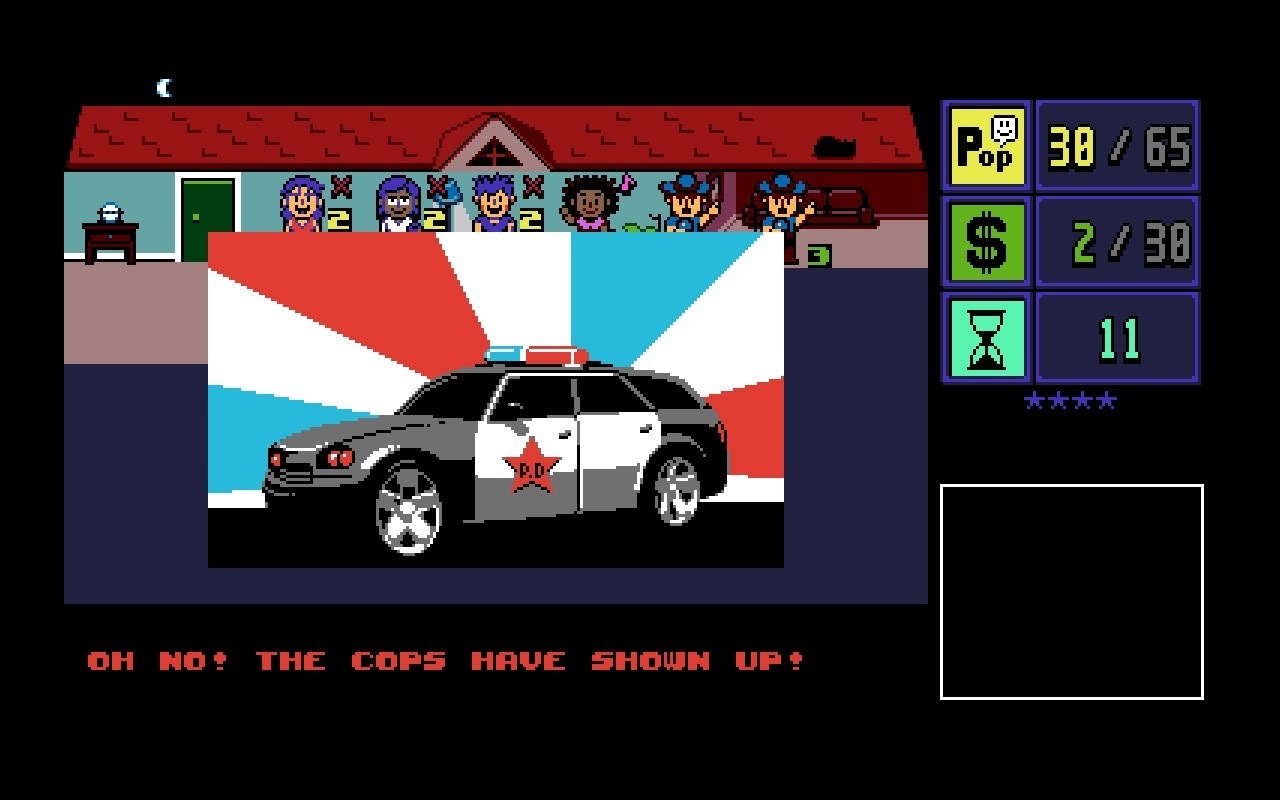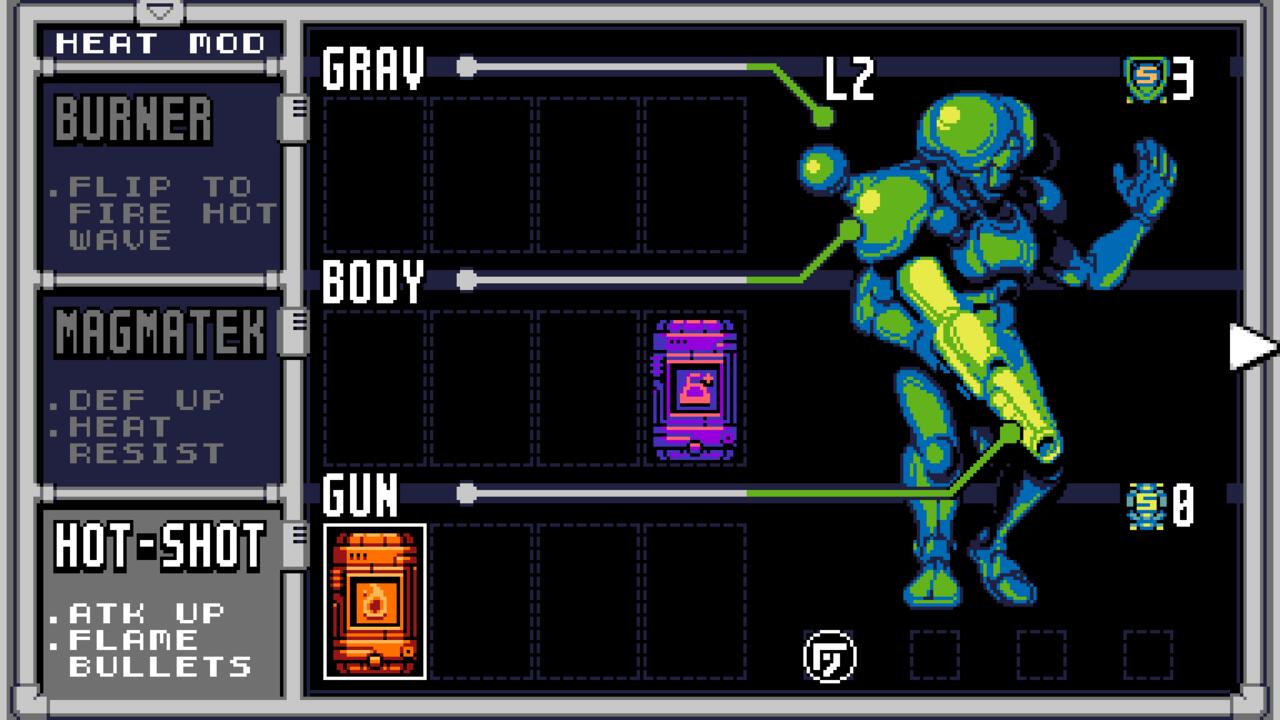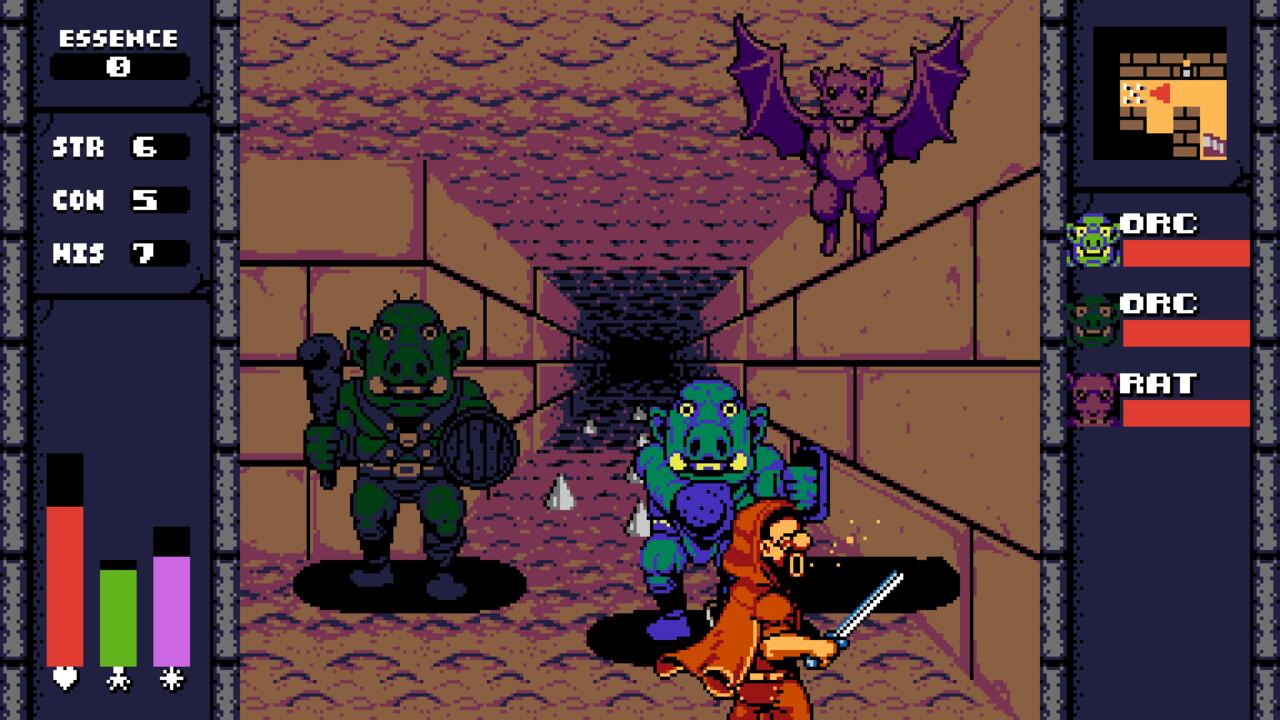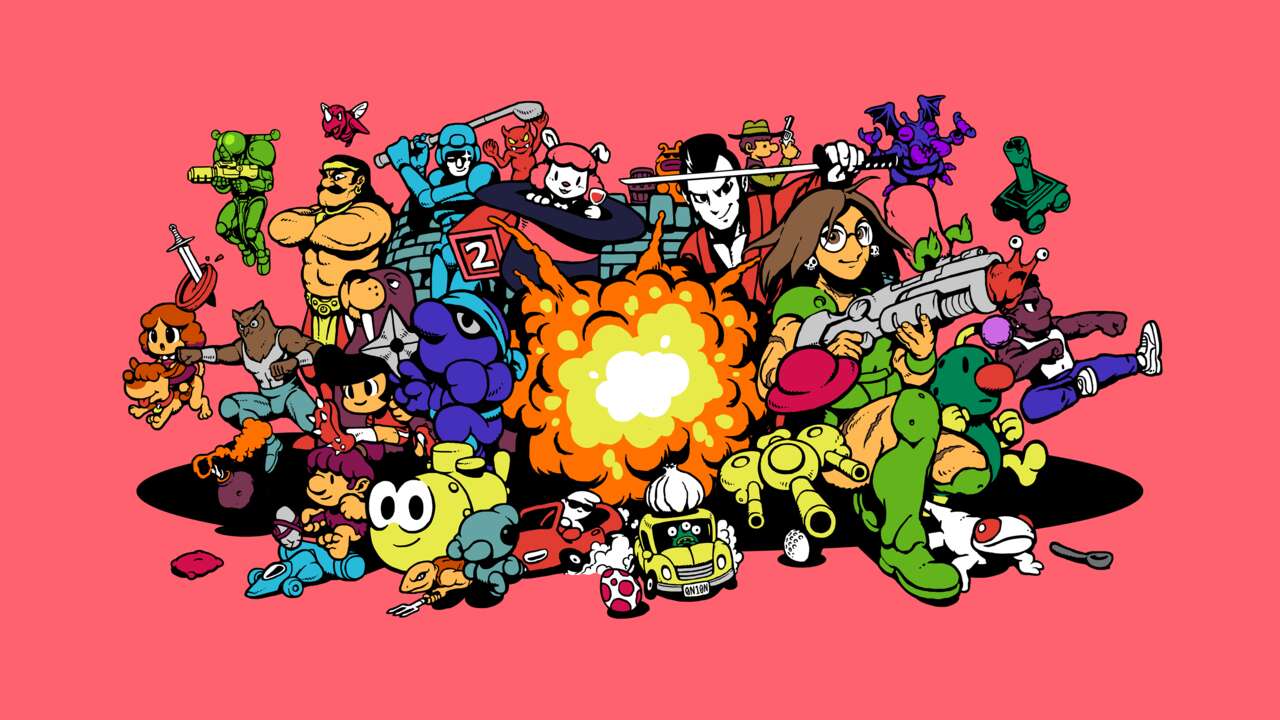Discovery in video games has changed over the last 40 years. While we are arguably in a golden age of creativity and innovation in the medium, it’s a different type of creativity than when games were in their infancy–learning to crawl, grappling for new ideas, and guessing at best practices. Modern-day games have become largely standardized, and that’s mostly for the better. But when we look back at retro game collections like the NES Classic or compilations from Digital Eclipse, we’re often remembering the trailblazers, not the oddballs. That’s what makes UFO 50 so special–it invokes the sense of wild experimentation and surprise that you would find in a cross-section of the earliest video games.
The pitch is simple: UFO 50 is a compilation of fictional retro games made throughout the 1980s by a prolific developer called UFO Soft. They range from 1982 to 1989, and span across the entire gamut of retro genres. The presentation leans into this, as selecting a game for the first time has you blowing the dust off of it. You get the sense that you discovered these forgotten gems in an attic or garage sale. And for the most part, the games carry the design and story aesthetic that was common in ’80s games, which I would describe as “sci-fi pulp as reimagined by early computer programmers.”
In reality, of course, the games were created by a team of modern-day developers led by Spelunky’s Derek Yu. That makes the decision to make not just a retro game but 50 retro games remarkably ambitious. One would expect such a massive undertaking to result in minigames at most, but that is not the case. These are almost universally the size and scope of actual games you would buy in the 1980s–still often smaller than the games we’d expect today, but not compromised for their fictional time period.
Gallery
And while UFO 50 doesn’t tell a straightforward narrative story, there is a lot of richness to be found in the meta-fiction of UFO Soft. You see the logo changing over time. The games themselves get more complex and more refined, and have better art direction and better quality-of-life features, over the fictional timeline. The games themselves have little notes about their development, and you can piece together criss-crossing plotlines involving the studio’s personalities and leadership. The occasional sequel will appear, showing an early style of iterative development that might result in radically different gameplay styles springing from the same core concepts. One of the games–a point-and-click adventure called Night Manor–has glimpses of the early cinematic achievement that you could see being influential in the fiction of the world.
Like a lot of early games, the simplicity of the controls means you more-or-less figure out the game by playing. This can be slightly frustrating sometimes, especially when a game ventures into territory with more complex, board game-like mechanics, like Devilition. Others, like Mooncat, have strange and counterintuitive controls that I struggled to get a proper feel for. This is realistic in that a lot of old video games tried to approximate board-game complexity or experiment with control schemes, but the wealth of other games to play made it difficult to remain patient with those more inscrutable ones.
Despite basing themselves around retro games, though, most of these have some special twist or feature that makes them stand out from similar games of their genre. You can mark a game as a favorite for easy reference later, and as I reached further and the games grew more refined, I kept marking more and more of them, eager to go back and experience them all to their fullest. And while UFO 50 is very casual in how it lets you approach the games in any order, there is a reward for delving deeply into each one–you get rewards to place in your garden for an achievement in each game, along with a golden cartridge for finishing it.
To give a taste, here are mini-reviews of some of my favorites in the compilation:
Mortol
This puzzle platformer gives you an array of peons willing to sacrifice themselves for the greater good, making your resources and lives draw from the same large pool. Each one can perform a “ritual” to stick into walls, turn into a stone block, or blow up passages, so you progress through the stage by carefully managing when and how to sacrifice them to keep progressing further. It was followed by a sequel, Mortol II, later in the collection, which includes a more sophisticated class-based system for utilizing your willing sacrifices, but there’s something very pure and engaging about the original idea.
Bushido Ball
A dodgeball-meets-fighting game with a selection of samurai characters to choose from. You smack the projectiles with your katana to ricochet it back at the other side, and on top of requiring precision timing, each character has their own special abilities, providing lots of replay value and room for skill-building.
Camouflage
Camouflage is a brilliant little puzzle game with a root in stealth mechanics. As a largely helpless chameleon, you need to navigate to your home while avoiding watchful predators. But being a chameleon, you can change your colors to match the tile you’re standing on. That makes navigating through a stage a tense exercise in planning your route to pick up new camouflage patterns. For extra challenge, each stage has collectibles to pick up, including a baby chameleon who will follow you around and pick up its own camouflage pattern, thus doubling the challenge.
Party House
Possibly my favorite surprise of the bunch, Party House is an ingenious puzzle game with mechanics similar to modern deck-builders. You’re given a strict number of turns to throw a series of parties, and you control the guest list. Each guest comes with bonuses to your cash and popularity–cash expands your house, and popularity goes toward inviting new guests. Some guests have “Troublemaker” attributes that will attract the cops, while others might sacrifice some popularity for cash, or vice-versa. Dancers stack as a multiplier for popularity. One party-goer even brings a random friend who risks overloading your party and summoning the fire marshall to kick someone out.
The party commences, a random assortment of your rolodex of party-goers shows up, and you tabulate your cash and popularity to put toward the next party, all while steering toward some particular win condition like having four aliens attend a single party. It’s shockingly compelling, and easy to keep the party going for just one more turn late into the night.

The Big Bell Race
The is one of the shortest games of the collection but also one most suited to multiplayer. The Big Bell Race is pure game mechanics: You’re a spaceship navigating through a boxy maze-like racetrack while bouncing off the other racing ships and grabbing power-ups that create track hazards for your competitors. A single tournament is eight quick races, but the competition can be fierce, and you can always play two-player to bump elbows against a friend.
Warptank
At first glance, Warptank appears similar to the classic Blaster Master tank segments, but it’s the “warp” in the name that really sets it apart. At any point, your tank can flip from floor to ceiling or to opposing walls. Navigating a stage is a delicate balance of avoiding traps and taking out enemies by frequently gaining access to new vantage points, giving it a fierce action-game feeling that also tickles your brain.
Vainger
This metroidvania-like platformer has a hook similar to Warptank, but the application of it in this genre makes it feel very different. As an alien soldier, you can swap the gravity polarity by double-tapping the jump button, so all of the traps and enemies are positioned to take advantage of stages that could be upside-down at any time. The result is something like the second quest of Symphony of the Night in a reversed castle, except you control when the whole thing flips on its head.

Pingolf
Lots of early games tried to approximate sports like golf, but Pingolf is a more modern take with a sci-fi aesthetic. The side-scrolling stages are set up like platforming stages with some elements of pinball, with narrow corners and bounce pads. It feels not quite like anything else, though the closest analogue is probably the recent Cursed to Golf.
Fist Hell
It wouldn’t be a retro-style compilation without a River City Ransom riff, but Fist Hell sets itself apart with fantastic pixel art and an engaging hook: zombies! You’re taking on the hordes of the undead with nothing but your fists and found objects, which leads to neat twists like lopping the skull off of one zombie and throwing it at another. It’s the kind of comical early gore that felt daring in the ’80s, and with four characters to choose from, there’s lots of replay value.
Valbrace
Another surprising favorite from a genre I haven’t had much experience with, Valbrace is a first-person dungeon-crawling RPG, similar to Dungeon Master or Wizardry 2. The presentation is top-notch for emulating the peculiar, pixelated look of those dungeon crawlers, and when you encounter monsters, you enter a more active real-time third-person combat system. What really helps it stand out, though, is the magic system, which maps spells onto a particular pattern drawn with your D-pad. You discover those spells as you proceed through the dungeon, but even if you die, the spell pattern will still work on your next run. That means if you can remember the spells–or map them onto graph paper–you’ll make each subsequent run that much easier.

Rakshasa
A side-scrolling action game along the lineage of Ghosts & Goblins, this one has you taking on hordes of demons with a unique revival mechanic. You’re extremely vulnerable to attacks and bound to die, but each time you die, you can recover your life by navigating around the demons of the spiritual plane. Each time you die, more demons are added, making it increasingly difficult–but not impossible–to recover your body.
Star Waspir
This is less of a retro genre reimagined, and more of an anachronistic take on the bullet hell. Lots of shoot-‘em-ups graced the NES and its similarly powered consoles, but Star Waspir has the tense risk-reward dynamic of populating constant power-ups that are just temptingly close to enemy fire. It’s the kind of tough, responsive combat that has made the genre such a hit, given new context through a retro filter.
Grimstone
An old-school JRPG-style game set in a fantastical version of the Old West, Grimstone begins as an angel rescues a handful of adventurers from a burning saloon, who then form a posse to go after outlaws. The aesthetic is reminiscent of the earliest Final Fantasy games, but its setting and a timing-based combat system gives it a modern twist.
Lords of Diskonia
What if a strategy game got a dose of air hockey? Lords of Diskonia has you collect income from villages and use it to buy an army of knights, archers, champions, and more, and then take them into battle. But far from a typical warzone, your soldiers here are differently sized circular disks who get fired into and bump against enemy units to attack. It’s a wildly different take on the strategy genre and feels tactical and dynamic at once.
Cyber Owls
The final game of the collection is also a smart, cheeky commentary on the prominence of Turtle-mania in the late ’80s, and the efforts from just about every cartoon studio or video game developer to make their own franchise-friendly animals with attitude. Cyber Owls is the kind of game you’d see then, with an elite band of owl soldiers, each with their own stages to match their specialty–from beat-‘em-up to stealth action. It’s probably the single most varied game of the set, and one of the most cinematic, serving as a perfect bookend to the fictional journey of game development throughout the decade.
Simply put, UFO 50 is an audacious triumph. Dozens of the games are compelling enough to warrant a full playthrough, and even some of the less successful experiments have some intriguing element or inventive idea to draw you in. Best of all, it’s exciting to have such a rich vein of strange, creative video game experiences to examine. This is nostalgia, but not the candy-coated feeling of reliving what we’ve already experienced. It’s remembering how it felt to discover something new.
